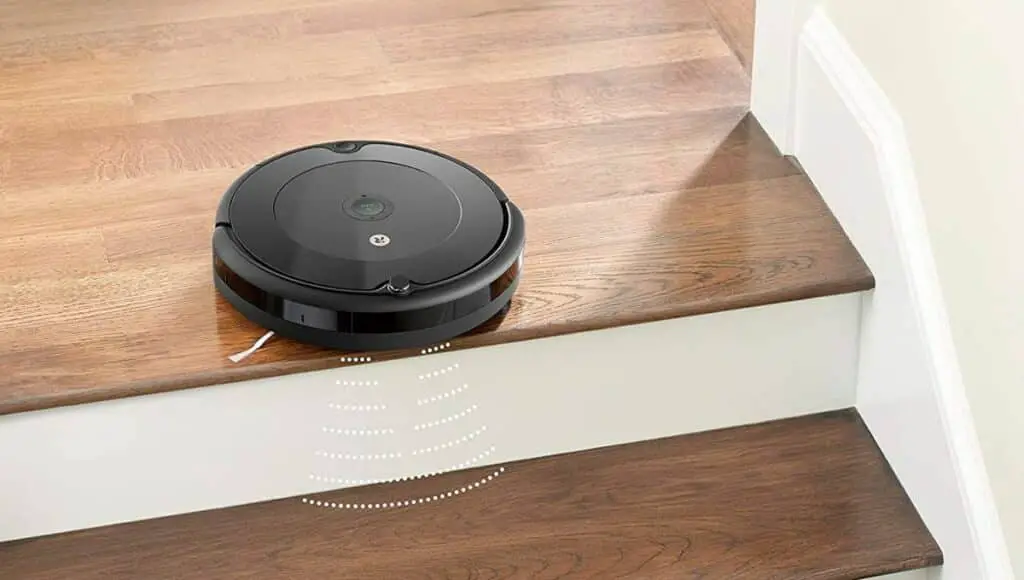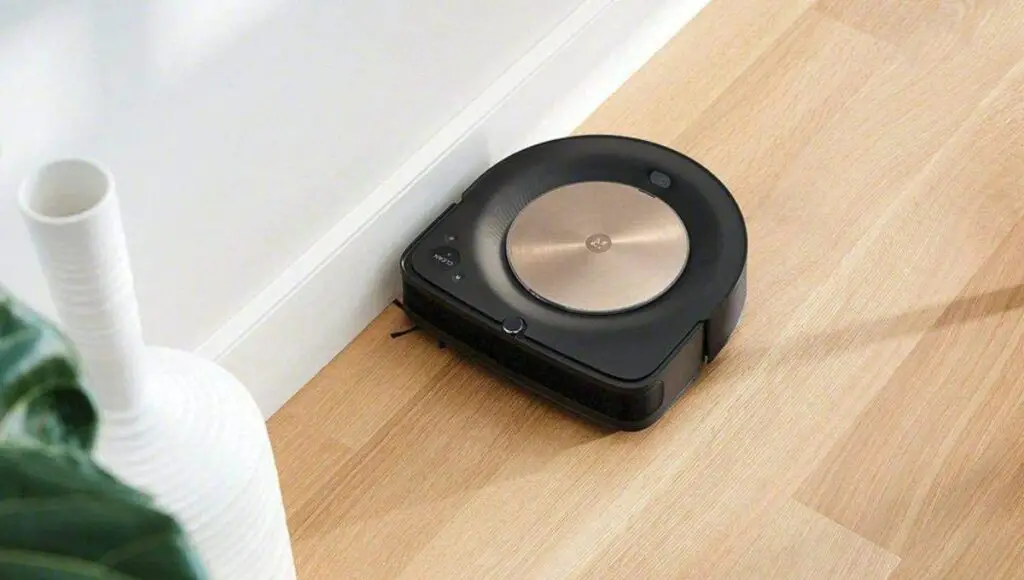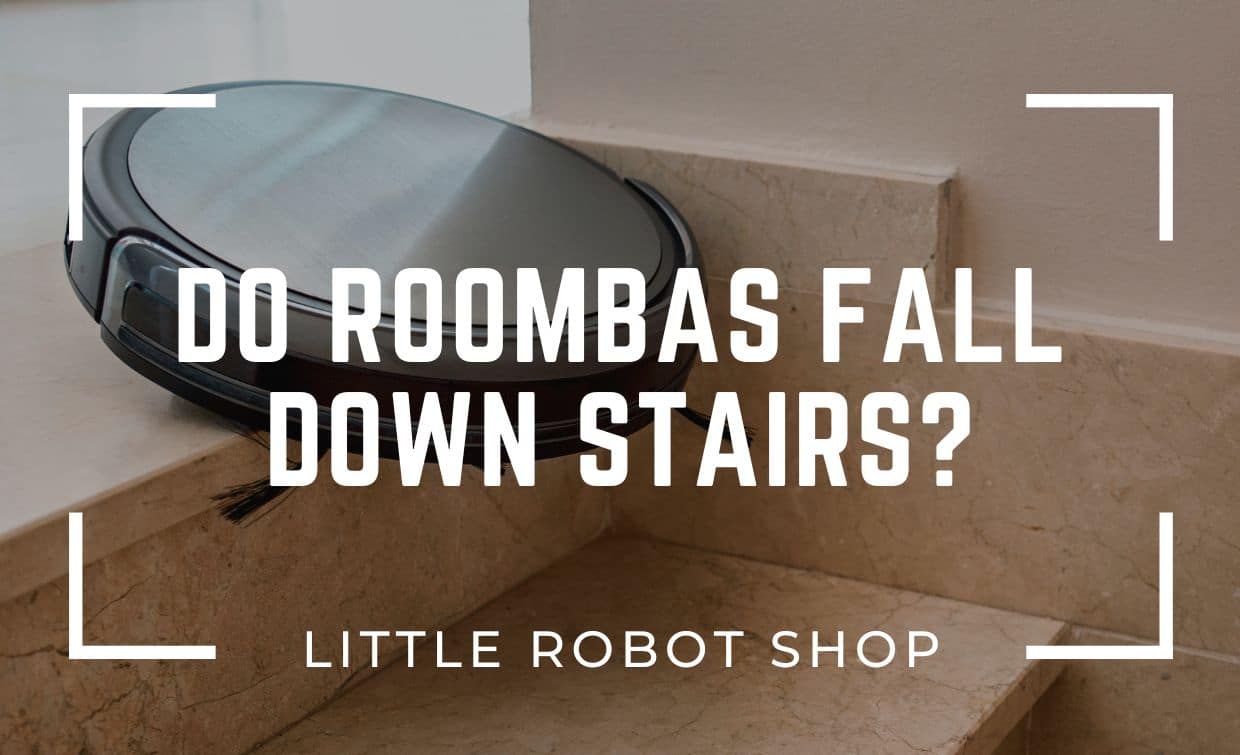There’s no denying that Roomba robot vacuum cleaners are becoming increasingly popular. After all, who wouldn’t want a little robot to help with the household chores? But as more and more people are embracing the Roomba life, there’s one question on everyone’s mind: do Roombas fall down stairs?
You may also like:
Do Roombas fall down stairs?
No, there’s no need to worry – Roombas are one of the best robot vacuums designed to avoid stairs and other drop-offs. They use sensors to detect changes in floor level, so they know when they’re approaching a staircase. However, it may be that robot vacuums fall down stairs if the sensors become blocked or aren’t cleaned, so it’s worth taking precautions if you have a staircase in your home.
For example, you should block the area around the staircase with furniture or baby gates. Depending on your model, you may also be able to set no-go zones and use virtual walls or magnetic strips to block the area off.

So what is a cliff sensor?
Every Roomba variant has built-in cliff sensors that prevent Roombas from falling or getting stuck. Cliff sensors are essential to robotic vacuums, as they help the vacuum avoid falling down stairs or other drop-offs. The sensor sends infrared beams that bounce off the floor. When the beam hits an edge, it’s reflected to the infrared sensors, which send a signal to the vacuum to change direction.
A Roomba’s cliff sensors are usually located on the bottom of the vacuum and can be either active or passive. Active sensors emit the infrared beam, while passive sensors detect reflections from other objects, such as walls.
Whenever Roomba senses itself in proximity to such objects, it immediately moves to a safer place. That is why Roomba does not usually fall.
Tips to avoid a Roomba from falling
Most robot vacuums are pretty good at getting around obstacles, but there are still a few things you can do to stop your automatic vacuum from getting stuck.
Put a physical barrier in the way
You can use physical barriers to help guide the automatic vacuum away from potential danger or places it may get stuck, such as under a bed. For example, you can also place obstacles like couch cushions in front of doors or even turn up the ends of a rug. These simple strategies can significantly reduce the chances of your vacuum getting stuck.
Install virtual walls
A virtual wall is a device that creates an invisible barrier, which can be used to stop a Roomba from getting to places it shouldn’t. When the Roomba hits the virtual wall, it will automatically turn around and head in the opposite direction. Virtual walls can be placed anywhere in your home, and they’re great for keeping your Roomba contained in one area. You can also use them to block off stairways or doorways to prevent your Roomba from falling down the stairs or getting into areas where it could get damaged.
Keep the sensors clean
Cliff sensors get dirty over time, so it is crucial to perform regular maintenance and cleaning. When the dust settles on them, they become unable to make sense of their surroundings. If Roomba reaches the staircase, the sensors fail to indicate the descent.
Ensure the floor is clear of obstructions
Make sure the room is clear of cords and furniture. Cords can easily get wrapped around the brushes, and furniture can block the vacuum’s path.

Can a Roomba climb stairs?
At present, Roombas are not able to climb stairs. This is because they are designed to clean flat surfaces and rely on sensors to avoid obstacles. However, future models of Roomba may be able to overcome this limitation, just as Dyson is working on.
Dyson, the company known for its high-end automatic vacuum cleaners, has filed a patent for a new type of wheel that would enable its robotic vacuum cleaners to climb stairs. The tri-star wheels are three circular structures attached to an actuated arm. This design would allow the robot to navigate steps and other obstacles.
Dyson does not have a robotic vacuum cleaner on the market that can climb stairs. However, with this patent, the company is aiming to develop robots that can access every nook and corner of a house. But before you get too excited, it will be some time before the company releases a stair-climbing vacuum cleaning robot in the market.
Whatever solution is devised, it is clear that making robot vacuums climb stairs would open up a whole new world of possibilities for the little robots.

FAQs
Does Roomba eventually learn the floor plan?
It depends on your model. Older or budget Roombas are unlikely to; they will rely on either “bump and go” navigation or onboard gyroscopes. However, mid to high-end newer models, such as the Roomba J7 and S9 will have smart mapping and will be able to know where it is at any point and offer room-specific cleaning.
How many times does it take Roomba to learn your house?
Usually, between four to five cleaning rounds will be enough for it to understand the pattern of your house. It is recommended to let it learn your house for improved customized cleaning.
Do people get emotionally attached to Roombas?
Evidence corroborates the assumption that people are likely to get emotionally attached to their robots. This is mainly caused by its round design and playful cleaning activity. It’s even more likely if you give them a cool name 🙂
Final thoughts
You now understand that, while not impossible, your ultra robot vacuum falling down stairs is highly unlikely, thanks to the cliff sensors incorporated. Nevertheless, there may be times when it fails, and you find your Roomba falling – caused by uncleaned sensors, incompatible surfaces, and lack of maintenance. If these factors are avoided in one way or the other, the fall of Roomba becomes an impossible event to happen.
